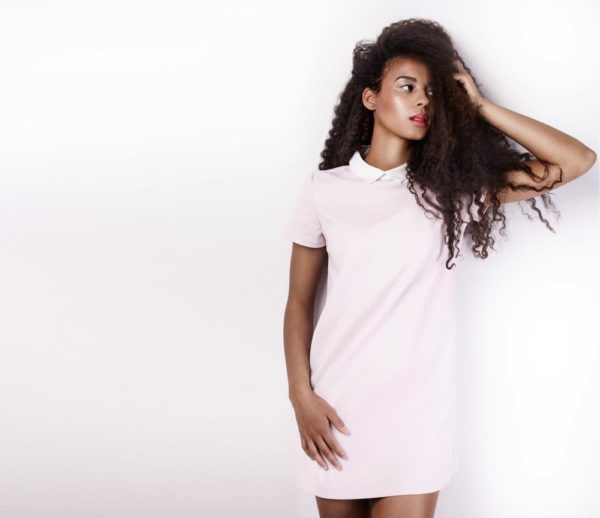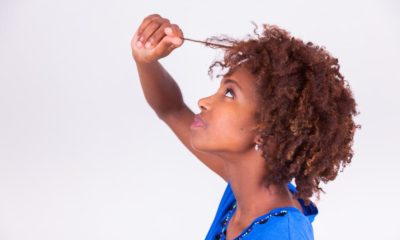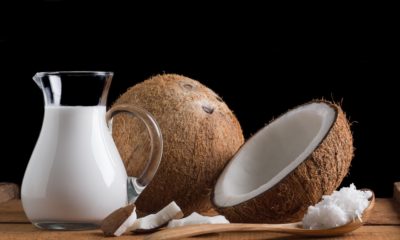Features
Nicole Ezeh: Low Porosity Hair? Here’s How To Get The Moisturising Done Just Once a Week
 Sounds impossible, right? Yeah well, LoPo sisters can stay five to seven days without moisturizing. This can be achieved using methods and products that lift and penetrate the hair cuticles respectively.
Sounds impossible, right? Yeah well, LoPo sisters can stay five to seven days without moisturizing. This can be achieved using methods and products that lift and penetrate the hair cuticles respectively.
Low Porosity hair has tightly-bound and closed cuticles. This makes washday seem like a marathon race. The human hair has a pH value of 4.5 – 5.5. The pH value of low porosity hair is very low (acidic) and anything acidic causes our hair cuticles to contract. So, that basically means the cuticles are closed at every point in time. The idea of the hair staying moisturized for a week applies when you successfully lift the cuticles thereby getting moisture into the cuticles before they re-contract. The contracted cuticles stay closed making it impossible for moisture to escape keeping the hair moisturized all week.
Characteristics of Low Porosity Hair
- Hair takes a long time to dry
- Products build up on curls rather than get absorbed
- Natural oils don’t penetrate but sit on the hair
- Hair takes much longer to get saturated when you wet it with water
How to Maintain Low Porosity Hair
There are different methods to be used in your regimen so your regimen may need to be tweaked or changed entirely to suit your hair’s needs. Let’s look into a few ways to rectify this situation:
Deep Condition With Heat
Low porosity hair, unlike other porosity types, needs heat for the cuticles to lift and for water and products to penetrate. Heat, in this context, does not apply to flat-irons or blowdryers but warm moist heat. Using steamers or heating caps or even blow dryer attachments for 15-30 minutes allows the cuticles to open so that the goodness of the conditioner can get into the hair strands. In our part of the world, these are not readily accessible so you can easily double your processing cap with a grocery bag and layer on a cotton shirt to increase the heat production. Let it sit for about two hours since body heat is not as hot as artificial heat. Prepare your deep conditioner with a teaspoon of any mentholated essential oil (Silverbird is super cheap) to generate more heat.
Washing should also be done with warm water and most importantly, do not do your last rinse with cold water. Low porosity hair does not have the luxury of ‘shocking’ cuticles closed because they are slightly open and that is as open as you can get them. So, washdays should consist of warm water only. Even if you do any additional rinses, (tea, apple cider vinegar, rice water, oil), do it while the rinse is warm. If your hair, by any chance, needs additional moisture mid-week, the L of your LCO method should be warm water.
Use Alkalized Water/Alkaline Products
This comes in when you want the cuticles to lift a little bit more. LoPo hair is acidic so anything alkaline raises the cuticles. Soak your hair in alkalized water for 15-20 minutes. Just pour the water like you would a rinse, massage it in and let it sit. DO NOT RINSE OUT. Here are two ways you can alkalize water:
– You can add 5 tablespoons of baking soda to 1L of water to alkalize it. Strain with a cheese cloth and use. Adjust the measurements according to your needs. Simply put, a tablespoon to 200mls or a cup of water
– Cut two lemons or four lime fruits into eighths and fourths respectively and soak in a pitcher (64oz/half a gallon) of water and leave overnight. Strain and use. Simply put also, a lemon/two lime fruits to a quart (32oz) of water. Do not heat the water.
Alkaline Products that can also be used to lift the cuticles include Bentonite Clay (pH 9-10), Rhassoul Clay (pH 7) and Castile Soap (pH 9)
Moisturize Immediately After Rinsing Out Your Deep Conditioner Using The LCO Method
Liquid, Cream, Oil works best for LoPo hair than the popular LOC method. After rinsing out your deep conditioner with warm water and if you like to be a little extra, soaking your hair in alkaline water, squeeze out the excess water, blot lightly with a cotton t-shirt not a towel and then apply your leave-in, cream and oil. Don’t blowdry after moisturizing. Air-drying is best but if you must, use cold air because hot/warm air will reopen the cuticles causing all the moisture you worked hard to get in to escape.
Clarify Weekly
Moisturizing shampoos are not advisable for LoPo hair because products tend to clog the cuticles easily leading to dry, itchy scalp and dandruff. In extreme cases, hair loss occurs also due to product buildup. A clarifying shampoo should be on hand for a LoPo girl or gentle cleansers like a Bentonite Clay, Aloe juice and ACV mixture. If you are afraid of the sulfates, melt a bar of black soap in 2L of warm water and add three tablespoons of your favorite oils and a tablespoon of vegetable glycerin. This shampoo is an amazing cleanser. Castile soap is also another awesome cleanser. It is alkaline so it lifts the cuticles and cleanses at the same time.
Here is my recipe for making Castile soap shampoo:
- 8 oz water
- 4 oz Castile soap
- 1 oz olive oil
- 1 oz coconut oil
- 2 tablespoons peppermint/eucalyptus/tea tree essential oil. Any one will do
Shake well before use. This should be enough for four/five cleanses. Shampoos are for the scalp not for the hair strands so be economical. Co washing can be done during the week but these cleansers should be used on washdays. Mix one part conditioner with three parts warm water when cowashing for better results.
Protein Treatments Are Unnecessary
Eggs, Mayo and heavy protein treatments like Aphogee 2-step treatment are unnecessary for LoPo hair. Wait! Don’t eat me yet! Protein treatments are done to strengthen the hair cuticles and make them to lie a little flatter and LoPo hair has cuticles that are already flat and compact. So, what exactly are you treating? They are too bulky/heavy to get into the cuticles anyway so like I said before, unnecessary.
There are only three kinds of proteins light enough to penetrate LoPo hair:
- Silk Amino acids
- Hydrolyzed Keratin
- Wheat Protein
These proteins can be gotten from leave-ins, stylers, deep conditioners or even moisturizers so invest in products with large amounts of such proteins and count that stress out of your regimen. Avoid products with silicones, mineral oil, petrolatum etc as they clog the cuticles.
Incorporate Humectants Into Your Regimen
Humectants like honey, panthenol and glycerine help add moisture to the hair. Use honey and glycerine for your hot oil treatments and deep conditioning. Glycerine is only suitable for the rainy season as it does the opposite of it’s job during the dry season. Humectants attract moisture from the atmosphere to the hair. BTMS (Behentrimomium Methosulfate) is a humectant also but is not ideal because it is silicone-based.
Use Light Products
Low porosity hair needs light creams, stylers and oils. Even if the deep conditioner that you have now/works best for your hair is thick and creamy, you can loosen it by adding oils and honey before use. Coconut, jojoba, grapeseed and sweet almond oils are ideal. Whipped butters are also great. You need your products to be as loose and light as possible to ensure penetration into the cuticles. Branded products like Cantu shea butter coconut curling cream is ideal. Heavy oils like castor oil will just sit on the hair without getting absorbed. Heavy-handedness is not advisable also. A little goes a long way.
This is all I have on this type of hair porosity. I hope you picked up a few helpful tips here. Time to banish dry, hard hair forever. You can add more tips if you have any.
Next up is High porosity. Peace and blessings!
Photo Credit: Dreamstime






















